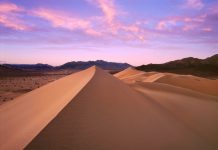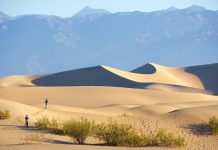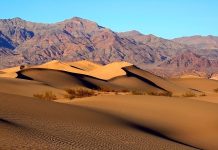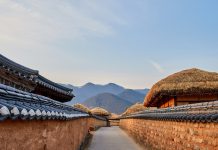
The Best Time to Travel to French Polynesia: A Complete Seasonal Guide
French Polynesia, with its turquoise lagoons, overwater bungalows, and lush volcanic peaks, is a dream destination for travelers. However, choosing the best time to visit depends on weather conditions, crowds, and the type of experience you seek. Here’s a detailed breakdown of the seasons to help you plan the perfect trip.
1. Overview of French Polynesia’s Climate
French Polynesia has a tropical maritime climate, meaning it’s warm year-round with two main seasons:
- Dry Season (May to October) – Cooler, less humid, and ideal for outdoor activities.
- Wet Season (November to April) – Warmer, more humid, with higher chances of rain and tropical storms.
Temperatures typically range between 75°F (24°C) and 86°F (30°C).
2. Best Time to Visit for Ideal Weather (Dry Season: May – October)
Why Visit During the Dry Season?
- Sunny & Pleasant Weather: Lower humidity, cooler nights, and minimal rainfall.
- Best for Water Activities: Snorkeling, diving, and sailing are excellent due to clear waters.
- Peak Tourist Season: Expect higher prices and more crowds, especially in July & August.
Month-by-Month Breakdown:
| Month | Weather | Pros | Cons |
|---|---|---|---|
| May | Warm, dry, light breezes | Fewer crowds, great visibility for diving | Slightly cooler evenings |
| June | Mild, dry, perfect beach weather | Ideal for honeymooners & outdoor adventures | Prices start rising |
| July | Coolest month (still warm) | Best for hiking & whale watching (starts in July) | Peak season, expensive |
| August | Dry, breezy, excellent for sailing | Great for surfing (Tahiti & Moorea) | Busiest month, resorts book up |
| September | Warm, less crowded | Still great weather, fewer tourists | Some rain possible late in the month |
| October | Transition to wet season | Lower prices, still good weather | Higher humidity by late October |
Best Islands to Visit in Dry Season:
- Bora Bora (best lagoon visibility)
- Moorea (great for hiking & snorkeling)
- Rangiroa & Fakarava (top diving spots)
3. Wet Season (November – April): Should You Visit?
Pros of Visiting in Wet Season:
- Lower Prices: Resorts and flights are cheaper.
- Fewer Tourists: More secluded beaches and private experiences.
- Lush Landscapes: Rain brings vibrant greenery and waterfalls.
Cons of Visiting in Wet Season:
- Higher Humidity & Rainfall: Short but intense downpours possible.
- Risk of Tropical Storms: Especially January–March (cyclone season).
- Reduced Visibility for Diving: More plankton in the water.
Month-by-Month Breakdown:
| Month | Weather | Pros | Cons |
|---|---|---|---|
| November | Start of rains, still warm | Lower prices, fewer crowds | Occasional showers |
| December | Warm, humid, festive | Christmas & New Year celebrations | Rainy days increase |
| January | Wettest month, possible storms | Cheapest time to visit | High humidity, cyclones possible |
| February | Hot, humid, frequent rain | Best for surfers (big waves) | Not ideal for diving |
| March | Still rainy, but improving | Great for cultural experiences | Some resorts may close for maintenance |
| April | Transition to dry season | Prices still low, weather stabilizes | Some lingering humidity |
Best Islands to Visit in Wet Season:
- Tahiti (more urban, better infrastructure)
- Huahine (less touristy, great for nature lovers)
- Maupiti (off-the-beaten-path paradise)
4. Special Events & Wildlife Encounters
Whale Watching (July – October)
- Best Spots: Moorea, Rurutu (Austral Islands)
- Species: Humpback whales migrate to breed in warm waters.
Heiva Festival (July)
- A vibrant cultural celebration with traditional dance, music, and sports.
Surfing Season (November – March)
- Best Waves: Teahupo’o (Tahiti), Haapiti (Moorea).
Turtle Nesting Season (November – March)
- Best Spots: Tetiaroa, Fakarava.
5. Final Verdict: When Should You Go?
| Best For… | Recommended Time |
|---|---|
| Perfect Weather & Diving | May – October |
| Budget Travelers | November – April |
| Honeymooners | June – September |
| Surfers | November – March |
| Whale Watching | July – October |
Best Overall Months:
✅ May, June, September, October – Great weather, fewer crowds, reasonable prices.
6. Travel Tips for Any Season
- Book Early (especially for July–August).
- Pack Light & Breathable Clothing (quick-dry fabrics for wet season).
- Check Cyclone Warnings if traveling in wet season.
- Consider Island-Hopping (each island has unique weather patterns).
Conclusion
French Polynesia is stunning year-round, but the dry season (May–October) offers the best balance of weather, activities, and comfort. If you prefer lower prices and don’t mind occasional rain, the wet season (November–April) can still provide a magical experience.
















